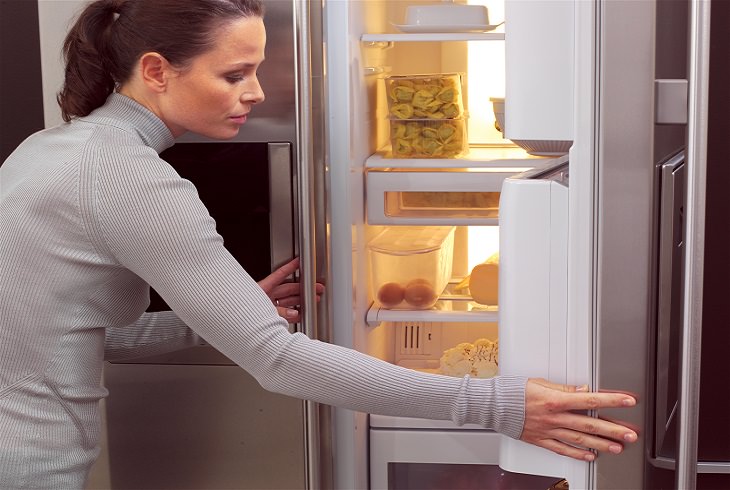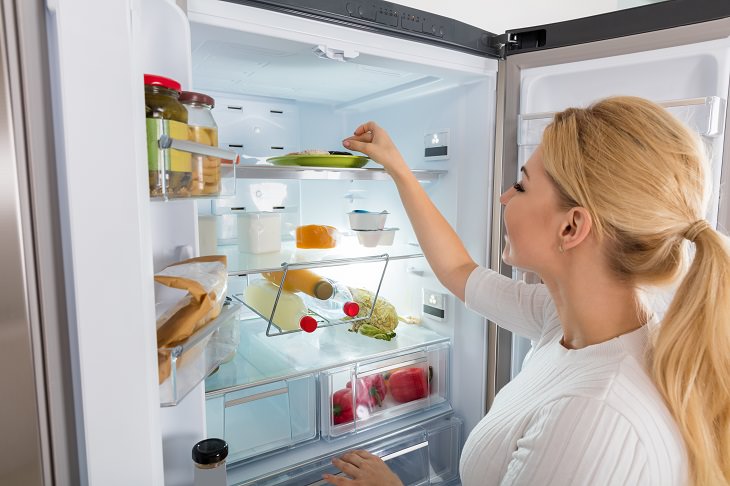
The fridge is an important part of a kitchen. It keeps our food fresh, our drinks chilled and stops our milk from turning to cheese! But your fridge isn't a simple storage device, it is a specially designed piece of technology with many compartments and sections - all of which vary in size and, importantly, in temperature.
If you are storing things in the wrong part of your fridge then you are not taking full advantage of the science behind its design, and your food could end up rotting earlier than it should. We all throw away so much food each year, which is bad for the environment, not to mention our bank account. This guide will help you arrange your fridge to maximize its technology and save money!

What Temperature Should Your Fridge Keep?
Some foods need to be kept at low temperatures to prevent them from being attacked by bacteria, which is why we use a fridge. Most modern fridges come with temperature controls and you should set yours to around 40 degrees Fahrenheit (4 degrees Celsius). Your freezer, on the other hand, should be set to 0 degrees Fahrenheit, or -17 degrees Celsius. But even when you have specified a temperature, there will be areas of your fridge that are colder than others, depending on how close they sit to the cooling mechanism. Your food will last longer if you understand the temperature variations of your fridge and how to store your food accordingly.
You should also avoid over-filling your fridge. Cold air needs to circulate, and room is required for that. If all your products are pressed up against each other, warmer pockets of air might develop in certain areas. Nobody likes to pour a refreshing glass of juice only to find that it is lukewarm.
What to Put in the Door Compartments

Most fridges have handy shelves attached to the inside of the doors. These are actually the warmest part of the fridge and should be reserved for the products that have the longest shelf life. A lot of people stick milk here, but it is not the best place for dairy products as they will deteriorate more quickly than they would if they were stored elsewhere.
The doors are much more suitable for products that are more resistant to bacteria, like sodas, bottled water, and juices as well as condiments such as ketchup, mayo and your favorite barbecue sauce. These products can cope much better with the temperature variations that can affect this part of the fridge.
What to Put on the Upper Shelves
The upper shelves have the most consistent and steady temperatures, although this area is not as cold as some other areas. Your strategy should be to store foods that don't need to be cooked here - think hummus, cold deli meats, and soft berries. Leftovers from the previous night's meal and half-finished drinks can also find a nice little home on the top shelves. Keep your fresh herbs in good condition by standing a small amount of them up in a jar and covering the jar loosely with a plastic bag.
What to Store on the Lower Shelves
The lower shelves are the coldest part of the fridge and the best place for foods that are most prone to rotting quickly and food that can do you damage if they are eaten when bad. This includes your raw meats (both red and white), seafood and eggs. Your meat should be kept in its original packaging. If you have bought it from the butcher's, wrap it well in a couple of plastic bags and then create a 'meat bin' using a container that can keep it separate from other items on the bottom shelf. This will also help you avoid the risk of blood and juices leaking into other areas of the fridge. Remember not to overload these shelves - let that cold air circulate!
What to Store in the Crisper Drawers
The plastic drawers in your fridge are not just for show, they are specifically designed to play a role. Any food kept in here will be in moist conditions that help keep fruit and vegetables plump and crunchy. However, this does NOT mean that you should just throw all your fruit and veg into the drawer and forget about it, as tempting as that may be.
Many fruits, including apples, peaches, pears, bananas, and plums, contain an enzyme that helps them ripen. This enzyme can also promote ripening in vegetables stored with the fruit, resulting in your vegetables going limp and droopy quicker than you would expect. The simple answer is to store your vegetables in one drawer and your fruit in another. Berries should not be stored here as they are more fragile when faced with excessive moisture - so stick them on the top shelves.
What To Store On Top of The Fridge

You don't have infinite room in your kitchen, so it's tempting to make use of that nice, spacious square on top of your fridge, turning it into an auxiliary cupboard. However, to keep temperatures inside low, your fridge pumps out hot air, meaning the area above it can exist in its own little tropical micro-climate (put your hand above the fridge and you will often feel how noticeably warm it is).
This heat isn't at all good for bread, so don't store it up there unless you want it to go blue quickly. It's not suitable for red wine either so store your bottle of Merlot elsewhere. This space is best used for products you don't eat - cookbooks, paper towels, cloths or your blender and other appliances.
What to Put in Your Freezer
Aside from the obvious (ice, frozen vegetables, meat), there are plenty of other items that can be stored in your freezer, including tortillas, eggs, and sauces. You can freeze bread for as long as three months. Keep things organized in the freezer to optimize storage and space and save some money on your energy bill. Unlike the fridge, the freezer works best when tightly packed, so if you don't have much in there, use a lot of one shelf rather than a little of two shelves. Using plastic containers that you can stack will help with the organization.
In the Fridge or Out of the Fridge?
It's tempting to assume that all our perishable items will be happiest when stored in cold conditions but this is simply not the case. Tomatoes can dry out and become rough when refrigerated and are much better off stored at room temperature, maybe even in a fruit bowl (let's not forget they are a fruit after all).
Onions, potatoes, and squash (zucchini, pumpkins, etc.) prefer cool over cold as well and are best kept in a dark cupboard or drawer. Bananas, kiwis, and avocados are among many fruits that are happy to be left to ripen in a fruit bowl on the table rather than inside the fridge but the ripening process will slow down in colder conditions, so if you want to eat the fruit later in the week and it's the middle of summer, it might be a good idea to put them in the fridge.
Other foods can be stored either in or out of the fridge, depending on how quickly you use them. Olive oils, vegetable oils, nuts, and grains are all perfectly fine stored in cupboards and on counters, but can last even longer if they are kept in the fridge. So if you aren't going to use them any time soon, you can put them on the upper shelves with your other, more resistant, foods.